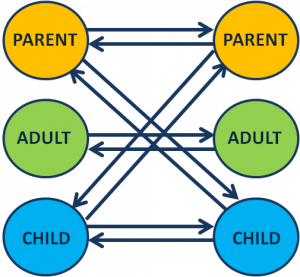Bridging the gap: Building collaborative relationships between social workers and care homes (Blog 2/3)
Dr Sally Nieman is currently working with My Home Life England through a part-time fellowship with the North Thames Applied Research Collaboration (ARC), and has written a 3 part blog series.
“In the first blog of this series, I explored how care homes are often overlooked, and why social workers should play a greater role in supporting older people living there. In this second post, I focus on the barriers to building stronger relationships between social workers and care home staff — and how we might begin to overcome them using a common My Home Life England approach.
 Relationships are at the heart of social work, yet structural system barriers, alongside negative societal narratives, create distance rather than collaboration between social workers and care homes. Social workers typically visit care homes for specific tasks, like annual reviews, or in times of crisis, when there is a ‘problem’, such as a safeguarding concern. Limiting social workers’ involvement with care homes in this way can affect social workers’ relationships with both care home staff and the older people living there.
Relationships are at the heart of social work, yet structural system barriers, alongside negative societal narratives, create distance rather than collaboration between social workers and care homes. Social workers typically visit care homes for specific tasks, like annual reviews, or in times of crisis, when there is a ‘problem’, such as a safeguarding concern. Limiting social workers’ involvement with care homes in this way can affect social workers’ relationships with both care home staff and the older people living there.
Social workers’ presence can often be associated with scrutiny; this can lead to care home staff feeling inspected rather than supported by social workers, which is likely to make them defensive or worried.
This was summed up in my PhD research by a social worker, who said:
”…. (care staff can be) anxious about someone coming in and questioning who doesn’t necessarily know everything that goes on in the care home and how it’s run, questioning practice and what’s going on and looking at things. When I’m doing a review, there can be defensiveness. Particularly from homes that don’t know me. Where I’ve built relationships, that’s different and they will be more accommodating and open.”
Social workers may struggle to access the information they need and, as ‘outsiders’, become more worried about what might be happening. This all reinforces a ‘them’ and ‘us’ mentality, which overlooks the importance of the older person in the care home.
As one social worker said:
“maybe there’s ways that we could just forge better relationships with [care] staff, because we’re all working towards the same aim and sometimes it feels like we’re going along kind of parallel lines that are never going to meet.”
So how could this gap be bridged?
One way might be for social workers to spend more time in care homes and to build relationships with staff, and by extension, with the people that live there. My research found that social workers with stronger connections to care homes were more attuned to the realities of care home life, and considered the emotional dimensions of practice. They felt more confident about navigating the environment, and could challenge misconceptions that might otherwise shape their practice.

I found that social workers really valued the space of the interviews and focus groups to think and reflect – on their own biases and fears, as well as the work.
Of course this is just one piece of the puzzle, as my research just looked at social workers’ perspectives. My experience at My Home Life England has reinforced the need to find out what care home leaders think about social workers. How do they perceive their interactions with social workers and what assumptions influence their responses?
It could also be powerful to create spaces for social workers and care home staff to unpack together the misconceptions they hold about each other. This could help them to understand each other’s realities and perspectives, build trust and strong relationships to help them work together, ultimately benefitting the older person. Partnership working across health and social care is a key priority: and it is only possible when staff know each other, and respect and understand each other’s roles and contributions.
An approach that My Home Life England uses in its leadership programmes is Transactional Analysis. This is a model of people and relationships based on two notions: that we have three parts to our personality (Parent, Adult and Child), and that these surface in our ‘transactions’ with others.

Transactional Analysis offers some insights when applied to the relationship between social workers and care home staff. If interactions feel hierarchical—where social workers unconsciously take on a “Parent” role and care home staff feel like a “Child” being told off — this may foster defensiveness or reluctance to engage.
Instead, promoting Adult-to-Adult interactions encourages open communication and shared problem-solving. Shifting dynamics might help to promote more positive relationships and invite both social workers and care home staff to challenge their assumptions, opening up spaces for reciprocal learning and mutual respect.
Given the inherent fear and myths that exist around both social work and care homes, it is important to acknowledge how they shape people’s practice and to explore them more openly to challenge and overcome them. Connecting the personal and professional is not a weakness, but a strength that creates a bridge to better connection and practice.
In my final blog next week, I’ll explore how we might reframe the narrative around social work in care homes and look at other models of practice. I’ll also share practical ideas for strengthening relationships and making sure older people remain at the heart of our work.
Read Sally's 1st Blog